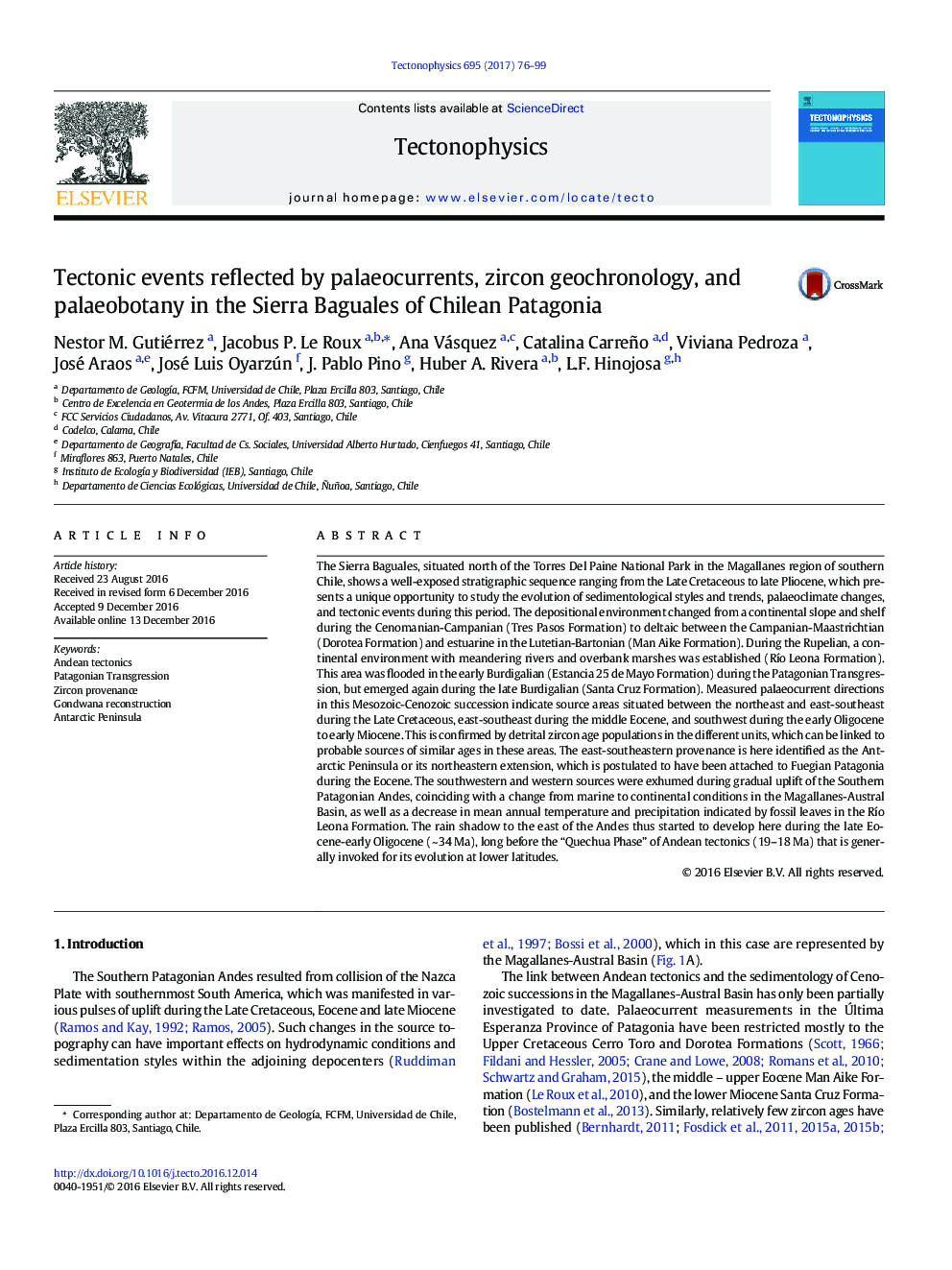| کد مقاله | کد نشریه | سال انتشار | مقاله انگلیسی | نسخه تمام متن |
|---|---|---|---|---|
| 5781898 | 1636706 | 2017 | 24 صفحه PDF | دانلود رایگان |
عنوان انگلیسی مقاله ISI
Tectonic events reflected by palaeocurrents, zircon geochronology, and palaeobotany in the Sierra Baguales of Chilean Patagonia
ترجمه فارسی عنوان
حوادث تکتونیکی منعکس کننده پدیده های جغرافیایی، ژئکرونولوژی زیرکون و پائئوبوتانی در سیرا بگوئول پاتاگونیا شیلی
دانلود مقاله + سفارش ترجمه
دانلود مقاله ISI انگلیسی
رایگان برای ایرانیان
کلمات کلیدی
تکتونیک اندی، انتقام پاتاگونیایی، پروکسین زیرکون، بازسازی گندوانا، شبه جزیره قطب جنوب،
موضوعات مرتبط
مهندسی و علوم پایه
علوم زمین و سیارات
فرآیندهای سطح زمین
چکیده انگلیسی
The Sierra Baguales, situated north of the Torres Del Paine National Park in the Magallanes region of southern Chile, shows a well-exposed stratigraphic sequence ranging from the Late Cretaceous to late Pliocene, which presents a unique opportunity to study the evolution of sedimentological styles and trends, palaeoclimate changes, and tectonic events during this period. The depositional environment changed from a continental slope and shelf during the Cenomanian-Campanian (Tres Pasos Formation) to deltaic between the Campanian-Maastrichtian (Dorotea Formation) and estuarine in the Lutetian-Bartonian (Man Aike Formation). During the Rupelian, a continental environment with meandering rivers and overbank marshes was established (RÃo Leona Formation). This area was flooded in the early Burdigalian (Estancia 25 de Mayo Formation) during the Patagonian Transgression, but emerged again during the late Burdigalian (Santa Cruz Formation). Measured palaeocurrent directions in this Mesozoic-Cenozoic succession indicate source areas situated between the northeast and east-southeast during the Late Cretaceous, east-southeast during the middle Eocene, and southwest during the early Oligocene to early Miocene. This is confirmed by detrital zircon age populations in the different units, which can be linked to probable sources of similar ages in these areas. The east-southeastern provenance is here identified as the Antarctic Peninsula or its northeastern extension, which is postulated to have been attached to Fuegian Patagonia during the Eocene. The southwestern and western sources were exhumed during gradual uplift of the Southern Patagonian Andes, coinciding with a change from marine to continental conditions in the Magallanes-Austral Basin, as well as a decrease in mean annual temperature and precipitation indicated by fossil leaves in the RÃo Leona Formation. The rain shadow to the east of the Andes thus started to develop here during the late Eocene-early Oligocene (~Â 34Â Ma), long before the “Quechua Phase” of Andean tectonics (19-18Â Ma) that is generally invoked for its evolution at lower latitudes.
ناشر
Database: Elsevier - ScienceDirect (ساینس دایرکت)
Journal: Tectonophysics - Volume 695, 16 January 2017, Pages 76-99
Journal: Tectonophysics - Volume 695, 16 January 2017, Pages 76-99
نویسندگان
Nestor M. Gutiérrez, Jacobus P. Le Roux, Ana Vásquez, Catalina Carreño, Viviana Pedroza, José Araos, José Luis Oyarzún, J. Pablo Pino, Huber A. Rivera, L.F. Hinojosa,
